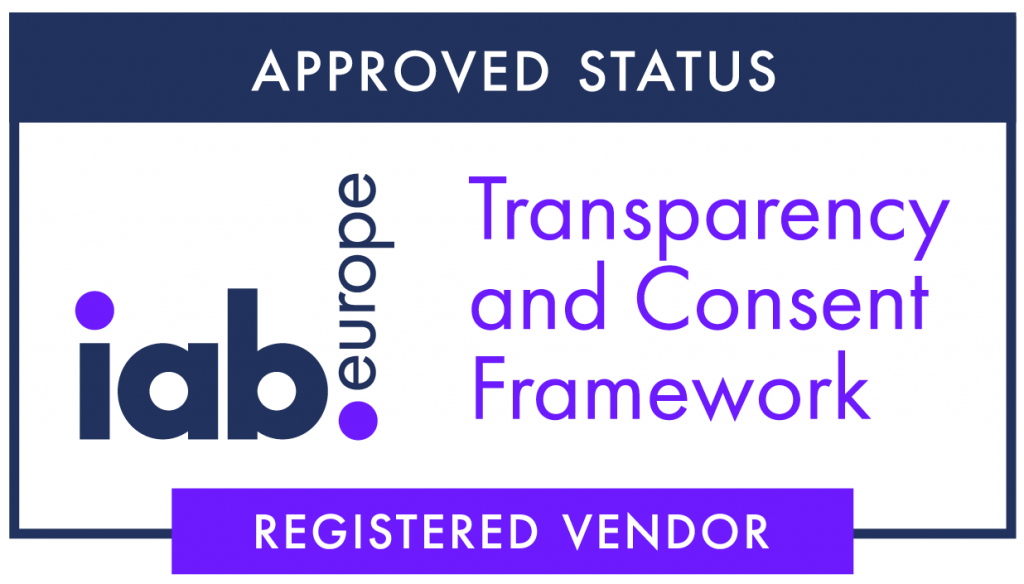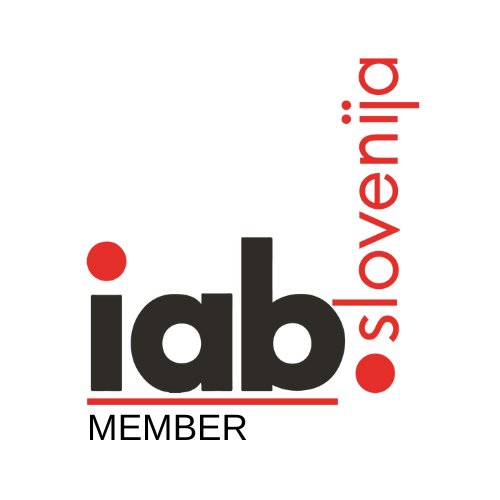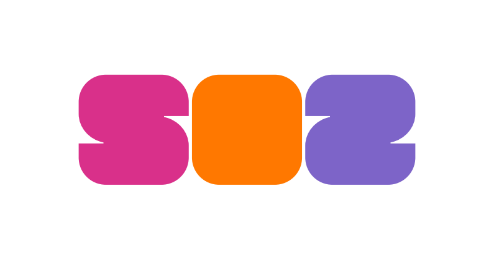
Programmatic advertising is expanding rapidly and it can be difficult to keep up with all the terms. Here is our brief A-Z glossary for programmatic advertising.
Ad Exchange
An ad exchange is a digital marketplace for advertisers, who are looking to run ads, and publishers, who are looking to buy and sell ad space (known as inventory). Publishers can offer their inventory for sale in an ad exchange, and advertisers can bid on that inventory via real-time auctions.
Ad Fraud
Ad fraud is also known as click fraud. It’s when a scammer tries to inflate the amount of impressions, clicks, or conversions that an ad campaign earns. This wastes the advertiser’s budget, and earns money for the scammer. Bots are usually used for this type of fraud.
Ad Inventory
Ad inventory is also known as media inventory. It’s the amount of ad space that a publisher, like a website, has available to sell to an advertiser.
Ad Refresh
A technique that allows publishers to increase the number of impressions served from predefined behaviour triggers such as clicking, scrolling or time.
Audience Segments
Audience segments or segmentation refers to the classification or division of certain markets based on specific criteria. An advertiser of baby food, for example, will be interested in the audience segment of families, especially those with newborns, and have little to no interest in the single, athletic demographic.
Ad Server
Ad servers make it possible for advertisers and publishers to manage, serve, and track ads across different advertising channels, like native, display, video, etc. It’s the ad servers that decide, in real-time, which ad to deliver to the advertising channel based on its relevance, targeting, budget, and campaign goals.
Ad Tag
A code that advertisers need to insert within a webpage where they intend to display ads. They’re used to determine parameters of individual ads while also providing creatives, collecting metrics, and generating reports.
Ads.txt
Ads.txt stands for authorised digital sellers. It’s a text file where a publisher records who can sell inventory on the website.
Ad Rank
Ad rank refers to the position Google places your pay-per-click (PPC) ad in search engine result pages (SERPs).
Ad Viewability
An impression is considered viewable if at least half of the ad’s pixels are in the user’s view for more than 1 second.
Ad Unit
Ad specifications i.e. formatting and dimension and the spaces on a website or app where you want to show ads.
Ad Network
A technology platform that serves as an ad inventory broker between publishers and advertisers. They aggregate ad supplies and offer them to advertisers.
Artificial Intelligence (AI)
Artificial intelligence refers to how you can teach machines to be rational and think similarly to humans. Programmatic advertising uses AI to automate and manage your ad campaign.
Audience Extension
Audience extension is a process in which publishers enable advertisers to reach more members of their target audience beyond their website’s collected data.
Audience Targeting
Audience targeting is a beneficial feature that enables advertisers to create ads that target specific users based on their demographics, interests, purchase history, and more. This makes it easier for advertisers to reach receptive audiences.
Automated Guaranteed
An automated guarantee is an automatic transaction in the private marketplace where an advertiser can buy placements at a fixed price over a specified period of time.
Behavioural Targeting
Behavioural targeting uses web user information based on their behaviours, like browsing history to figure out which ads will resonate the best with them. Ads are personalised using behavioural data like which websites a person has visited, purchases they make, or which emails they have opened, and more. .
Bid
A bid is the amount of money an advertiser places in a PPC (pay-per-click) auction for a keyword to help secure an ad placement for a top spot in the search results.
Bid Request and Response
A bid request is a piece of code that sends ad inventory details to the ad exchange. This way, advertisers can see what ad space is available for their ads. If an advertiser is interested in using that inventory, they can send back a bid response.
Bot Traffic
Bot traffic (or non-human traffic) consists of ad impressions made by bots rather than humans. Bots, or web robots, are software applications that perform simple tasks on the Internet. While they have some constructive uses, they are most often associated with fraudulent activities, such as mimicking a human’s view of an ad.
Brand Lift
Brand lift, enables advertisers to measure their ad’s impact on the perception of their brand. It contains metrics like brand awareness, ad recall, and consideration to help determine how your ads influence consumers’ feelings about your brand.
Brand Safety
Brand safety is a strategy or practice that helps advertisers avoid ad placements in contexts that could potentially hurt their brand identity or reputation. For example, a vegan company’s ad being shown on a hunting equipment website would be a brand safety concern.
Contextual Advertising
Contextual advertising is a targeting method that leverages the context next to which an ad appears on the web to deliver highly-relevant ads to the right audience, at the right moment.
Call To Action (CTA)
A CTA guides users to take action on your advertisement. This can include browsing your products or making a purchase. CTAs usually involve colourful, eye-catching buttons that link to your website.
Click-Through Conversion (CTC)
Click-through conversions (CTC) measure the amount of times a user sees an ad, clicks on it, and converts during that visit. CTC usually records first-time clickers, and so it’s useful for tracking conversions that happen right away, without nurturing.
Click-Through Rate (CTR)
Click-through rate (CTR) is a ratio that describes the percentage of users who clicked on your ad based on the total number of users who saw your ad. Click-through rate explained via a mathematical formula. CTR = clicks divided by impressions, multiplied by 100.
Connected TV (CTV)
A connected TV is a device that connects to (or is built into) a television, making it possible for that device to stream video content. CTV advertising delivers ads through those devices to viewers watching streamed content.
Contextual Advertising
Contextual advertising refers to placing ads on web pages based on the content of those pages. As a result, advertisers can create targeted, relevant ads for users based on the content they are viewing.
Conversion Rate
Conversion rate is a metric that enables you to view how many users who saw your ad followed through with your CTA compared to the number of users who didn’t.
Cookies
Cookies are small bits of software installed on a computer after visiting a website. The primary function of cookies is to retain user/visitor information to make the visiting experience faster and more reliable upon repeated visits. Another use, however, is sharing that collected information with other parties for more comprehensive consumer data.
Cookie Sync or Match
Cookie synching is the process of linking the user identifier (the cookie ID) from one technology to another. It helps advertisers to make better bidding choices and target users more effectively.
Cost Per Acquisition (CPA)
Cost per acquisition (CPA) is a digital marketing metric that measures the total cost of a defined goal, like a conversion. CPA is calculated by dividing the total campaign spend by the number of customers that were gained by that campaign.
Cost Per Click (CPC)
Cost per click (CPC) is a bidding model that figures out how much advertisers pay for each individual click on their digital ads. CPC is calculated by dividing total ad cost by the number of clicks received.
Cost Per Lead (CPL)
CPL is a metric that tells you what your company spends, on average, to obtain a new lead.
Cost Per Mille (CPM)
Cost per mille (CPM) refers to an impression-based bidding model, which is the cost per one thousand impressions—in other words, marketers pay a set price for every 1,000 impressions that an ad receives. “Mille” is the latin word for “thousand,” which is why cost per mille means cost per 1,000.
Cost Per Completed View (CPCV)
Cost per completed view (CPCV) is an ad pricing model where marketers pay a publisher every time their video is watched from start to finish. This helps marketers target high-quality users. CPCV is calculated by dividing the budget of an ad campaign by the total completed views.
Cost Per View (CPV)
CPV is a metric that refers to what your company spends each time a user views your advertisement.
Cookieless Advertising
Cookieless advertising uses metadata like keywords and website content to place digital ads based on the environment in which an ad appears. Ads are served to users based on the content they are consuming at that moment in time.
Cross-Device Targeting
Cross-device targeting makes it possible for advertisers to deliver ads to a specific audience, across multiple devices. Ads can be shown on different devices, like a smartphone, smart TV, and a computer.
Data Management Platform (DMP)
A data management platform (DMP) collects and organises 1st, 2nd, and 3rd-party audience data from various online, offline, and mobile sources. That data is used to create detailed customer profiles. Customer profiles are profiles that describe shared characteristics about a specified group of customers. The DMP will then make the data anonymous, and share it with programmatic platforms like ad exchanges, demand-side platforms (DSPs), and supply-side platforms (SSPs).
Display Ads
Display ads are advertisements that contain some form of multimedia such as images and videos. They can appear on websites, social media platforms, and more.
Deal Check
A tool used to check for issues that cause the number of matched ad requests to decrease for a publisher’s Private Auctions or Preferred deals.
Demand-Side Platform (DSP)
A demand-side platform (DSP) makes it possible for advertisers to buy and manage ad space from multiple publishers, and across different advertising channels. DSPs make this process simple because it can all be done through one interface.
Dayparting
Dayparting is a marketing strategy that can be used to deliver ads at the most optimised times. For example, a marketer might use dayparting to only run ads on weekdays between 5pm to 9pm and Saturdays 12pm to 6pm because they notice that’s when their ads earn the most engagement. Dayparting makes it possible to schedule ads for specific days of the week, at specific times.
Dynamic Retargeting
Dynamic retargeting makes it possible for advertisers to serve ads to a user featuring the most recent product page they’ve visited. A native or display ad that shows the exact product that a user viewed online is served, or a custom messaging based on that product’s headline or body copy.
eCPM
eCPM or effective cost per mille, takes into account how many impressions were actually paid for. eCPM will be specific to each of your ad sources and is used to show what the value of your ad inventory is, based on the number of impressions your ad partners purchased.
First-Party Data
First-party data refers to information you can collect directly from your website visitors. You can collect first-party data to learn more about your audience, such as their demographics and behaviour on your website.
First-Price Auction
In a first-price auction, advertisers bid a set amount on an ad placement or keyword, and the highest bid wins. The highest bidder will then pay the amount they bid for their advertisement.
Floor Price
The floor price is the minimum or lowest amount you are willing to sell your ad inventory for. Floor price can dictate how much digital ads the minimum cost of digital ads through an ad exchange or supply-side platform (SSP).
Frequency Capping
It’s a way to restrict how many times a specific visitor sees a particular advertisement. This technique makes ads more affordable as showing the same ad to the same person again and again may result in ad fatigue.
Geotargeting
Geotargeting refers to choosing keywords and phrases related to locations, such as cities and regions, that your target audience is searching for online.
Impressions
Impressions count the number of times a user sees your advertisement, even if that user views your ad multiple times. So, if one user views your ad six times, your ad has six total impressions.
Incrementality
Incrementality gives marketers insight into whether ads impact signups or purchases by using a test vs. control format. This format allows marketers to compare results from a group of people who were shown an ad, and a comparable control group that didn’t see the ad, giving them a picture of how they gained new customers.
Inventory
It’s the ad space available on applications or web pages to advertise. A publisher may not present all web pages for advertising. Also, a seller may offer several ads on the same page, i.e.: banner ads and in-video ads can be placed on a single page.
Landing Page
A landing page is the web page a user is directed to once they click on your advertisement. Landing pages are often a product or service page or your contact page.
Long-Tail Ad Inventory
Long-tail ad inventory is aggregated inventory from less popular or well-known publisher sources. Programmatic enables advertisers to combine disparate sources of long-tail inventory to reach highly targeted niche audiences.
Maximum Bid
Maximum bid is the absolute most you are willing to pay each time a user clicks on your advertisement.
Multi-Channel Advertising
Multi-channel advertising makes it possible for advertisers to reach users across different platforms and advertising channels. This promotes larger campaign reach because advertisers are able to reach users who are only using some channels.
Native Advertising
Native advertising integrates high-quality advertising content into the organic experience of a platform. Native ads fit into the design and feel of the websites where they are shown, which creates an immersive user experience for the viewer.
Native Outstream Video
Native outstream video ads are placed between the paragraphs of an article on a website. The video ads only play when they are in view. If a user scrolls past the native outstream video, it will stop playing.
Pay-Per-Click (PPC)
PPC advertising enables you to place advertisements on search results pages, social media platforms, and more. You pay each time a user clicks on your advertisement with PPC ads.
Post-Click Engagement
Post-click engagement is the practice of engaging website visitors after they click on your advertisement by encouraging them to take action, such as contacting your company or making a purchase.
Price Floor
The lowest price a seller will accept for impressions.
Private Auction
A private auction is restricted to a specific group of advertisers. These advertisers can then bid on the ad inventory before it becomes available in the open marketplace.
Private Marketplace
A private marketplace is a real-time bidding environment only available to a specific group of advertisers. Publishers invite a limited group of advertisers to bid on premium ad space.
Programmatic Advertising
Programmatic advertising is a process of buying advertising space that is automatic, rather than through the traditional, manual process. This automatic process serves ads to users at the right time, and at the right price.
Programmatic Audio
Programmatic audio automates the selling and insertion of audio ads into audio content. Audio ads are delivered to listeners through various platforms, including audiobooks, podcasts, and streaming playlists.
Programmatic Direct
Programmatic direct, also known as programmatic guaranteed, is an agreement made directly between a publisher and an advertiser through a programmatic ad buying system like a demand-side platform (DSP).
Programmatic Video
Programmatic video describes any video ad that is delivered to viewers programmatically, including native video ads and CTV ads. Viewers may see a video ad ahead of streaming a TV series, or while scrolling through a blog.
Real-Time Bidding (RTB)
It is a process that enables digital advertising inventory to be bought and sold. RTB happens when ad inventory gets bought and sold on a per-impression or view basis in real-time. It’s typically facilitated by a programmatic platform – DSP, or an ad exchange – and the process happens in an instant auction that takes less than a second.
Remnant Inventory
Remnant inventory is a publisher’s non-premium inventory, which is usually sold at a discounted rate by a third party via non-guaranteed programmatic buys.
Retargeting
Retargeting is a digital advertising strategy that enables advertisers to re-engage a user that has shown interest in their brand or product. Retargeting ads are delivered to a user based on their previous intent-based actions on the web.
Third-Party Data
Third-party data (also written as 3rd-party data) is information that’s collected and sold by independent organisations. It’s made available to marketers to use as part of their advertising initiatives.
Return On Ad Spend (ROAS)
ROAS refers to how much money you earn in comparison to how much you spend on your advertisements.
Return On Investment (ROI)
ROI enables you to measure the success of your advertising campaigns by calculating how much money you earn from your advertising investments.
Second Party Data
First-party data that’s purchased directly or through a DMP.
Skippable In-Stream Ads
These ads appear in a video and can be skipped by clicking the given button. Users may, however, have to watch a portion of the ad before they get the option to skip it.
Second-Price Auction
In a second-price auction, advertisers bid a set amount on ad inventory. The highest bidder will pay the bid price placed by the second-highest bidder plus one cent. For example, if the highest bid was 5.00 € and the second-highest bid was 4.50 €, the highest bidder would pay 4.51 €.
Standard In-Stream Ads
It’s a non-skippable form of advertising that’s used in videos. These ads can appear at the beginning or mid of a video.
Supply-Side Platform (SSP)
A supply-side platform (SSP) is an ad tech platform that publishers use to manage, sell, and optimise their programmatic ad inventory. It enables this inventory to be sold to advertisers in an automated, efficient way.
Target Audience
Target audience refers to the users who are most likely to purchase your products and services. Advertisers will often create personalised ads that resonate with their target audience to maximise sales.
Third-Party Data
Third-party data refers to information about Internet users collected by a third-party business or entity. Businesses can purchase this data to help expand their reach by creating targeted ads that reach more members of their target audience.
Traffic Source
Traffic source refers to the source that your web traffic, or website visitors, are coming from. You can use traffic sources to determine which advertisements drive the most traffic to your website.
Viewability
Viewability is a digital advertising metric that measures how many impressions of an ad were actually viewed. According to the Interactive Advertising Bureau (IAB), at least 50% of an ad must be in view for at least one second for display ads and two seconds for video ads for them to count as being “viewed.”
View-Through Conversion (VTC)
A view-through conversion (VTC) happens when a user is served an ad for the first time, doesn’t click on the ad, but converts at a later time. View-through conversions are tracked using a view-through conversion window, which starts as the first impression is served and continues until there is a conversion within a certain number of days.
Video Ads
Video ads are advertisements that contain an attention-grabbing video for users to watch. Video advertisements are usually more engaging than text-only ads.
Video Ad-Serving Template
A uniform template used to structure metadata and tags sent to a video player from an ad server. This allows ad servers to seamlessly deliver a video ad into a compatible player.
Video Completion Rate (VCR)
Video completion rate (VCR) is a video marketing metric that measures how many viewers watched a video ad from start to finish. This rate helps advertisers figure out whether or not their audience is finding the content they’ve produced engaging.
Win rate
Win rate is a ratio that is used to measure the effectiveness of bid strategy. It is calculated by dividing the total number of impressions won by the total number of bids submitted.




